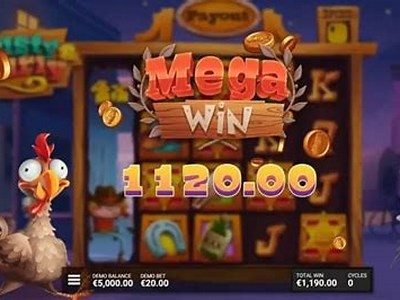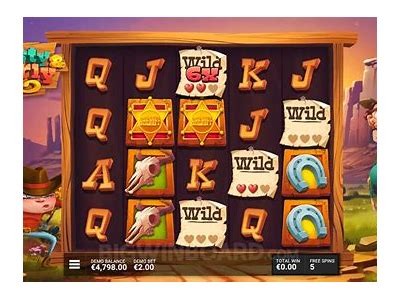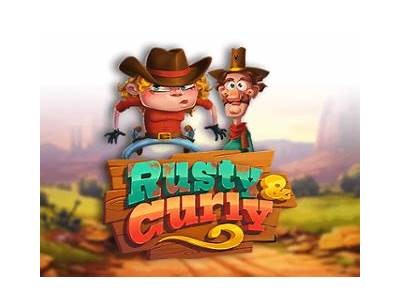Exploring the Unique Elements of the Rusty, Curly Demo and Its Impact on Modern Art
Exploring the Unique Elements of the Rusty, Curly Demo and Its Impact on Modern Art
The art world has always been a dynamic stage where innovation meets tradition. Among the myriad styles and movements that have emerged, the Rusty, Curly Demo stands out as a compelling blend of texture, form, and conceptual depth. This article delves into the unique elements that define this artistic expression and examines its influence on contemporary art practices.

The Origin of the Rusty, Curly Demo
The Rusty, Curly Demo originated in the late 20th century, during a period marked by experimentation and a return to organic forms. Artists began to seek inspiration from nature, turning to materials that could evoke the raw, imperfect beauty of the world around them. The term "rusty" symbolizes not only the weathered appearance of the materials used but also the passage of time and the stories that objects carry.

Characteristics of the Rusty, Curly Demo
At its core, the Rusty, Curly Demo is characterized by its use of unconventional materials, often including rusted metals, reclaimed wood, and organic fibers. These materials contribute to a tactile quality that invites viewers to engage with the artwork physically and emotionally. The "curly" aspect stems from the playful use of shapes, forms, and lines that often mimic natural growth patterns, such as vines or waves.

Textural Elements in the Rusty, Curly Demo
Texture plays a pivotal role in the Rusty, Curly Demo. The combination of rough, oxidized surfaces with smoother, polished areas creates a dynamic contrast that captivates the viewer's eye. This interplay between rough and smooth encourages a tactile engagement, inviting audiences to not only view but also feel the artwork. The textures often tell their own stories, suggesting decay, renewal, or the passage of time.

Color Palette and Its Significance
The color palette employed in the Rusty, Curly Demo typically features earthy tones, including rust reds, deep browns, and muted greens. These colors echo the themes of nature and environmental consciousness that are prevalent in contemporary art. The rust shades symbolize decay and history, while the earthy greens and browns connect the work to the organic world.

Thematic Exploration in the Rusty, Curly Demo
Artists working within the Rusty, Curly Demo often explore themes of decay, transformation, and the passage of time. This thematic focus aligns with a broader movement in modern art that seeks to address humanity's relationship with nature and the environment. By utilizing materials that have been discarded or left to weather, artists emphasize themes of rebirth and renewal, challenging the viewer to reassess value and beauty in art and life.
Impact on Modern Art
The Rusty, Curly Demo has had a profound influence on modern art, inspiring a wave of artists to experiment with materials that were previously considered unworthy of artistic representation. This movement has opened new avenues for expression, encouraging artists to engage with themes of sustainability and environmental consciousness, which are increasingly relevant in today's society.
Notable Artists Associated with the Rusty, Curly Demo
Several contemporary artists have gained recognition for their contributions to the Rusty, Curly Demo. Artists such as Ana Mendieta and Richard Serra have explored similar themes of decay and natural form in their work. By emphasizing the importance of physical materials and textures, these artists highlight the intersection between the natural environment and human creativity.
Installation Art and the Rusty, Curly Demo
Installation art has become a popular medium for expressing the principles of the Rusty, Curly Demo. Artists often create immersive environments that invite viewers to step inside and experience the artwork fully. These installations can evoke a sense of connection to nature, making the audience more aware of their surroundings and the impacts of human activity on the environment.
The Future of the Rusty, Curly Demo
As we look to the future, the Rusty, Curly Demo continues to inspire emerging artists to engage with the natural world through their work. The principles of this artistic expression serve as a foundation for exploring sustainability and addressing pressing environmental issues, such as climate change and resource depletion. Artists are increasingly challenged to find innovative solutions and materials that reflect their commitment to these themes.
Conclusion: The Enduring Legacy of the Rusty, Curly Demo
The Rusty, Curly Demo has etched its mark on the landscape of modern art by combining raw materials with emotional depth and thematic richness. Its unique elements of texture, form, and color have inspired a transformative approach to art-making, inviting a new generation of artists to embrace the beauty of imperfection and the narratives held within natural materials. As the art world continues to evolve, the legacy of the Rusty, Curly Demo will undoubtedly endure, shaping the future of artistic expression for years to come.
Related Tags
Rusty Art, Curly Demo, Modern Art Influence, Environmental Art, Tactile Experience, Contemporary Artists ```
Unless otherwise specified, the copyright of this article belongs to WillBet: Your Gateway to Premier Online Betting All, please indicate the source for reprinting.
Category: fist of destruction
Title: Exploring the Unique Elements of the Rusty, Curly Demo and Its Impact on Modern Art
Related
Related Sites
- 最近发表
-
- Exploring Hard Rock Bet Regulations and Licensing in Various States Across the U.S.
- How to Easily Log In to Your Playstar Slot Account and Start Winning
- Discover the Ultimate Betting Experience with Willbet Sports Network for Live Sports Events and Promotions
- BetMGM New Jersey Online Casino App Login Guide for Easy Access and Gameplay
- Download the Cafe Casino App APK for Exciting Gaming and Rewards on Mobile Devices
- Discover the Exciting World of Keno with Our Free and Fun Keno App Today
- Explore the Exciting World of Fanatics Casino: Your Ultimate Guide to Gaming Fun
- Interwetten de Review and Guide: Explore Betting Opportunities and Features Available in 2023
- Interwetten Gutschein Kicker: Unlock Exclusive Discounts and Promotions for Sports Betting
- How to Easily Log In to Your WillBet Sportsbook Account and Reset Your Password
- 标签列表
-
- online-casino (19)
- live-dealer-games (10)
- bonuses (9)
- sports-betting (50)
- online-gambling (18)
- promotions (15)
- gaming (9)
- online-gaming (26)
- casino-games (36)
- online-slots (12)
- responsible-gaming (15)
- bankroll-management (10)
- responsible-gambling (20)
- Interwetten (46)
- online-betting (42)
- customer-support (11)
- Willbet (10)
- slot-games (10)
- Online-Gambling (16)
- Sports-Betting (21)
- Online-Gaming (14)
- live-betting (13)
- Casino-Games (16)
- mobile-gaming (21)
- Online-Betting (18)